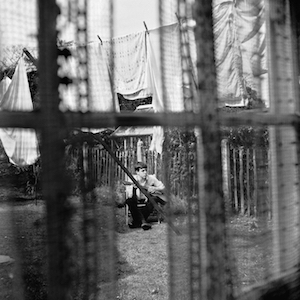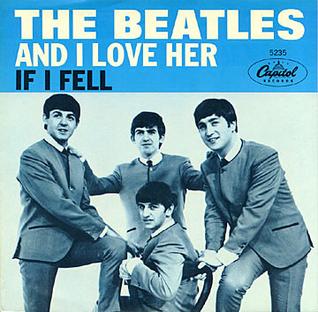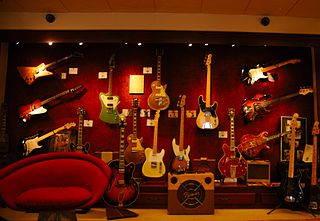| Period | Lennon | McCartney | Harrison | Best/Starr+ |
| July–November 1961 | | - 1961 Höfner Violin bass
- Selmer Truvoice Stadium amplifier
| - Futurama Resonet Grazioso
- 1957 Gretsch Duo Jet
- Gibson Les Paul GA-40 amplifier
| |
| November 1961 – July 1962 | - 1958 Rickenbacker 325
- Fender Vibrolux amplifier
| - 1961 Höfner Violin bass
- Selmer Truvoice Stadium amplifier
- 'Coffin' speaker rig
| - 1957 Gretsch Duo Jet
- Gibson Les Paul GA-40 amplifier
| |
| July–September 1962 | - 1958 Rickenbacker 325
- Vox AC-15 Twin amplifier
| - 1961 Höfner Violin bass
- Quad II amplifier
- 'Coffin' speaker rig
| - 1957 Gretsch Duo Jet
- Vox AC-30 amplifier
| - Best's Premier drumkit (July–August)
- Starr's Premier drumkit (August–September)
|
| September 1962 – April 1963 | | - 1961 Höfner Violin bass
- Quad II amplifier
- 'Coffin' speaker rig
| - 1957 Gretsch Duo Jet
- 1962 Gibson J-160E
- Vox AC-30 amplifier
| |
| April 1963 | - 1958 Rickenbacker 325
- 1962 Gibson J-160E
- Vox AC-15 Twin amplifier
| - 1961 Höfner Violin bass
- Vox T-60 amplifier
| - 1957 Gretsch Duo Jet
- 1962 Gibson J-160E
- Vox AC-30 amplifier
| |
| April–June 1963 | - 1958 Rickenbacker 325
- 1962 Gibson J-160E
- Vox AC-15 Twin amplifier
| - 1961 Höfner Violin bass
- Vox T-60 amplifier
| - 1957 Gretsch Duo Jet
- 1962 Gibson J-160E
- Vox AC-30 amplifier
| - Starr's first Ludwig drumkit with first drop T logo drumhead
|
| April–June 1963 | - 1958 Rickenbacker 325
- 1962 Gibson J-160E
- Vox AC-15 Twin amplifier
| - 1961 Höfner Violin bass
- Vox T-60 amplifier
| - 1962 Gretsch 6122 Chet Atkins Country Gentleman
- 1962 Gibson J-160E
- Vox AC-30 amplifier
| - Starr's first Ludwig drumkit with first drop T logo drumhead
|
| June–September 1963 | - 1958 Rickenbacker 325
- 1962 Gibson J-160E
- Vox AC-30 amplifier
| - 1961 Höfner Violin bass
- Vox AC30 bass head
- Vox T-60 cabinet
| - 1962 Gretsch 6122 Chet Atkins Country Gentleman
- 1962 Gibson J-160E
- Maton Mastersound MS-500 (July–August only)
- new Vox AC-30 amplifier
| - Starr's first Ludwig drumkit with first drop T logo drumhead
|
| October–December 1963 | - 1958 Rickenbacker 325
- 1962 Gibson J-160E (stolen in December 1963)
- Vox AC-30 amplifier
| - 1963 Höfner 500/1 bass
- Vox AC30 bass head
- Vox T-60 cabinet
| - 1962 Gretsch 6122 Chet Atkins Country Gentleman
- Rickenbacker 425
- 1962 Gibson J-160E
- Vox AC-30 amplifier
| - Starr's first Ludwig drumkit with first drop T logo drumhead
|
| December 1963 – January 1964 | - 1958 Rickenbacker 325
- Vox AC-50 amplifier
| - 1963 Höfner 500/1 bass
- Vox AC100 bass amplifier
| - 1962 Gretsch 6122 Chet Atkins Country Gentleman
- 1962 Gretsch Tennessean
- 1962 Gibson J-160E (used by Lennon and Harrison)
- Vox AC-50 amplifier
| - Starr's first Ludwig drumkit with first drop T logo drumhead
|
| February 1964 | - 1958 Rickenbacker 325
- 1964 Rickenbacker 325
- Vox AC-50 amplifier
| - 1963 Höfner 500/1 bass
- Vox AC100 bass amplifier
| - 1962 Gretsch 6122 Chet Atkins Country Gentleman
- 1962 Gretsch Tennessean
- 1963 Rickenbacker 360/12
- 1962 Gibson J-160E (used by Lennon and Harrison)
- Ramirez classical (studio only)
- Vox AC-50 amplifier
| - Starr's second Ludwig drumkit with second drop T logo drumhead
|
| February–April 1964 | - 1964 Rickenbacker 325
- Vox AC-50 amplifier
| - 1963 Höfner 500/1 bass
- Vox AC100 bass amplifier
| - Second Gretsch Country Gentleman
- Gretsch Tennessean
- 1963 Rickenbacker 360/12
- 1962 Gibson J-160E
- Vox AC-50 amplifier
| - Starr's second Ludwig drumkit with third drop T logo drumhead
|
| May–July 1964 | - 1964 Rickenbacker 325
- 1964 Rickenbacker 325/12
- Vox AC-50 amplifier
| - 1963 Höfner 500/1 bass
- Vox AC100 bass amplifier
| - Second Gretsch Country Gentleman
- 1962 Gretsch Tennessean
- 1963 Rickenbacker 360/12
- 1962 Gibson J-160E (used by Lennon and Harrison)
- Vox AC-50 amplifier
| - Starr's third Ludwig drumkit with fourth drop T logo drumhead
|
| July 1964 | - 1964 Rickenbacker 325
- 1964 Rickenbacker 325/12
- new Vox AC-50 amplifier
| - 1963 Höfner 500/1 bass
- Vox AC100 bass amplifier
| - Second Gretsch Country Gentleman
- 1962 Gretsch Tennessean
- 1963 Rickenbacker 360/12
- 1962 Gibson J-160E (used by Lennon and Harrison)
- new Vox AC-50 amplifier
| - Starr's third Ludwig drumkit with fourth drop T logo drumhead
|
| August–December 1964 | - 1964 Rickenbacker 325
- 1964 Rickenbacker 325/12
- 1964 Gibson J-160E
- Vox AC-100 amplifier
| - 1963 Höfner 500/1 bass
- Vox AC100 bass amplifier
| - Second Grestch Country Gentleman
- 1962 Gretsch Tennessean
- 1963 Rickenbacker 360/12
- 1962 Gibson J-160E
- Vox AC-100 amplifier
| - Starr's third Ludwig drumkit with fourth drop T logo drumhead
|
| December 1964 – January 1965 | - 1964 Rickenbacker Rose, Morris 1996 (replaced 1964 325 after it gets a crack in the headstock)
- 1964 Rickenbacker 325/12
- 1964 Gibson J-160E
- Vox AC-100 amplifier
| | - Second Gretsch Country Gentleman
- 1962 Gretsch Tennessean
- 1963 Rickenbacker 360/12
- 1962 Gibson J-160E
- Vox AC-100 amplifier
| - Starr's third Ludwig drumkit with fourth drop T logo drumhead
|
| January–August 1965 | - 1964 Rickenbacker 325
- 1961 Fender Stratocaster (studio only)
- Framus Hootenanny 5/024 12-string (studio only)
- 1964 Gibson J-160E
- Vox AC-100 amplifier
| - 1963 Höfner 500/1 bass
- 1962 Epiphone Casino E230TD (studio only)
- Epiphone Texan FT-79
- Vox AC100 bass amplifier
| - Second Gretsch Country Gentleman
- 1962 Gretsch Tennessean
- 1961 Fender Stratocaster (studio only)
- 1963 Rickenbacker 360/12
- 1962 Gibson J-160E
- Vox AC-100 amplifier
| - Starr's third Ludwig drumkit with fourth drop T logo drumhead
|
| August – September 1965 | - 1964 Rickenbacker 325
- 1964 Gibson J-160E
- Vox AC-100 amplifier
| - 1963 Höfner 500/1 bass
- Epiphone Texan FT-79
- Vox AC100 bass amplifier
| - Second Gretsch Country Gentleman
- Gretsch Tennessean
- 1963 Rickenbacker 360/12
- Vox AC-100 amplifier
| - Starr's fourth Ludwig drumkit with fifth drop T logo drumhead
|
| October 1965 – March 1966 | - 1964 Rickenbacker 325
- 1961 Fender Stratocaster (studio only)
- 1964 Gibson J-160E
- 1965 Epiphone Casino (Used on "Think For Yourself")
- Vox AC-30 and AC-100 amplifiers
| - 1963 Höfner 500/1 bass
- 1964 Rickenbacker 4001S bass (studio only)
- Fender Bassman amplifier
| - Second Gretsch Country Gentleman
- 1961 Fender Stratocaster (studio only)
- Gibson ES-345
- 1962 Gibson J-160E
- 1965 Rickenbacker 360/12
- 1965 Epiphone Casino (Used on "Day Tripper", Think For Yourself and I'm Looking Through You)
- Vox AC-30 and AC-100 amplifiers
| - Starr's fourth Ludwig drumkit with fifth drop T logo drumhead
|
| April–June 1966 | - 1965 Epiphone Casino
- Gretsch 6120 (studio only)
- 1964 Gibson J-160E
- 1964 Rickenbacker 325 (Used on "And Your Bird Can Sing")
- Vox AC-30 amplifier
- Fender Showman amplifier
- Vox 7120 prototype amplifier
| - 1964 Rickenbacker 4001S bass (studio only)
- 1962 Epiphone Casino E230TD (studio only)
- Fender Bassman amplifier
- Vox 4120 prototype amplifier
| - 1961 Fender Stratocaster
- 1965 Epiphone Casino
- 1965 Rickenbacker 360/12
- 1964 Gibson SG Standard
- 1962 Gibson J-160E
- Burns Nu-Sonic bass guitar (studio only)
- Vox AC-30 amplifier
- Fender Showman amplifier
- Vox 730 prototype amplifier
| - Starr's fourth Ludwig drumkit with fifth drop T logo drumhead
|
| June–July 1966 | - 1965 Epiphone Casino
- 1964 Gibson J-160E
- Vox 7120 prototype amplifier
| - 1963 Höfner 500/1 bass
- Vox 4120 prototype amplifier
| - 1965 Epiphone Casino
- 1965 Rickenbacker 360/12
- 1964 Gibson SG Standard
- Vox 730 prototype amplifier
| - Starr's fourth Ludwig drumkit with fifth drop T logo drumhead
|
| August 1966 | - 1965 Epiphone Casino
- 1964 Gibson J-160E
- Vox Super Beatle amplifier
| - 1963 Höfner 500/1 bass
- Vox Super Bass Beatle amplifier
| - 1965 Epiphone Casino
- 1965 Rickenbacker 360/12
- 1964 Gibson SG Standard
- Vox Super Beatle amplifier
| - Starr's fourth Ludwig drumkit with fifth drop T logo drumhead
|

















